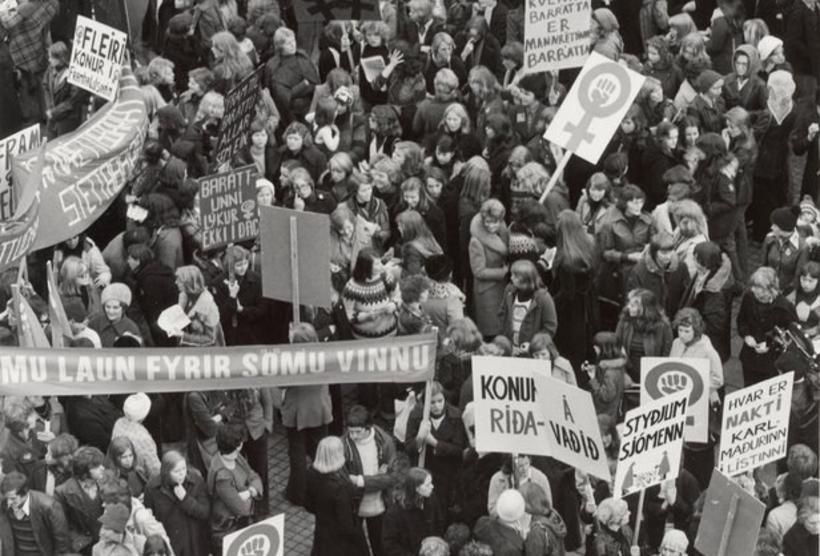In 1975 Icelandic women were fed up of being undervalued. It wasn’t just that they weren’t being valued for their labour, they also were sick of their lack of political representation: only nine women had ever won seats in parliament.
So against the backdrop of the global feminist movement, Iceland’s women decided to take things into their own hands.
Iceland’s women held a day of protest on October 24th 1975.

An outpouring of women onto the streets was by then a well, established form of activism.
In 1970 tens of thousands of women had protested on 5th Avenue in Manhattan.
In the UK that same year 20,000 women marched in Leeds against discriminatory wages.
But when Iceland took to the streets to protest on October 24th 1975, more than 90% of the female population went on strike that day. Teachers, nurses, office workers, housewives put down their tools and didn’t go to work, provide childcare or even cook in their kitchens.
This proved how indispensable they were. It wasn’t just the whole community that was paralyzed, the whole society was at a stand still. Within five years the country had elected the world’s first democratically elected female president – Vigdis Finnbogadottir.
Today, Iceland is the best place in the world for gender equality.
Not everything’s fine and dandy
Thousands of female employees across Iceland walked out of workplaces at 2.38pm on Monday to protest against earning less than men.
In Iceland’s capital, Reykjavik, thousands of women gathered in central Austurvöllur square when they left the offices, shops, factories, and schools where they were supposed to be working. Similar but smaller protests are thought to have taken place around the country.
Women still earn on average 14 to 18 percent less than their male colleagues. This means in every eight hour day women are essentially working without pay from 2.38pm.
In eleven years, less than three minutes has been gained annually towards eliminating the gender pay gap, according to English-language Icelandic news site Grapevine.
In 2005, women left work at 2.08pm — the minute they began working for free.
In 2008, it was 2.25pm.
Although progress is being made, it will take 52 years to eliminate the disparity between men and women’s earnings in Iceland entirely.
When countries achieve gender equality they maximize their competitiveness and economic potential, yet the balance is still one sided.
Recommended articles
Does The Gender Equality In Work Feel A Little One Sided?
Women in stem: quality over quantity
Worried about asking for what you need? Six tips to make it easier









Leave A Comment